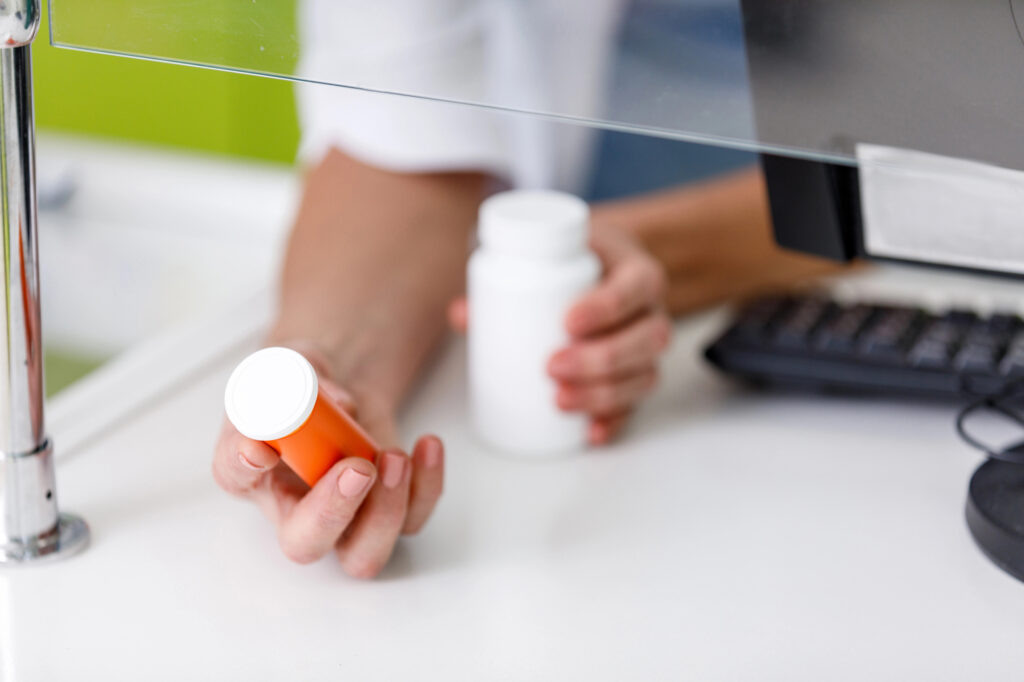Many people find themselves making tough choices, like cutting back on groceries, skipping social outings, or delaying important home repairs just to afford their prescription medications. It’s a situation that no one should have to face, but fortunately, there is help available.
Prescription assistance programs (PAPs) offer a lifeline for those struggling with the high cost of medications, providing essential financial relief and access to necessary treatments. These programs reduce or even eliminate the cost of prescriptions to ensure individuals can prioritize their health without sacrificing their quality of life.
What is the Prescription Assistance Program? Let’s look at its many benefits and additional strategies to help you save money on your medications, so you can maintain your health without financial stress.

What are Prescription Assistance Programs?
Prescription assistance programs (PAPs) are set up by pharmaceutical companies, non-profit organizations, and government agencies to help people get the medications they need at little to no cost.
The main goal of PAPs is to support those who struggle to afford their medications, ensuring that financial worries don’t stand in the way of their health and well-being.
Types of Prescription Assistance Programs
Manufacturer-Sponsored Programs
Many pharmaceutical companies run their own prescription assistance programs for the medications they produce. Each company has its own set of eligibility criteria and application processes.
Non-Profit Organizations
Numerous non-profit organizations offer PAPs to help patients get affordable medications. Their programs often focus on specific diseases or patient populations and provide both financial assistance and additional support services.
State and Federal Programs
Government programs like Medicaid, as well as state-specific assistance programs, also offer financial support for medications. However, they usually have strict eligibility requirements based on income, age, and medical condition.
Eligibility Criteria for PAPs
Eligibility for PAPs varies depending on the specific program. However, some common criteria include:
Income Limits
Most PAPs are designed to help low-income individuals. Applicants typically need to provide proof of income to demonstrate financial need.
Lack of Insurance Coverage
Many PAPs prioritize individuals who don’t have health insurance or whose insurance doesn’t cover the prescribed medications. Some programs may also assist those with high copayments or deductibles.
Medical Necessity
Applicants may need to provide documentation from a healthcare provider indicating that the medication is medically necessary for their treatment.

Benefits of Prescription Assistance Programs
Financial Relief
One of the most significant advantages of PAPs is their financial relief. For many people, the cost of medications can be overwhelming, leading to difficult choices between paying for their prescriptions or covering other essential expenses like rent, groceries, or utilities.
Many patients are also left in the difficult position of having to postpone or avoid purchasing the medications they need due to financial constraints. This issue is especially true for those without adequate insurance coverage or for individuals managing chronic conditions that require ongoing treatment.
By participating in a PAP, individuals can save hundreds or even thousands of dollars every year. In a study conducted in 2019 and 2020, 61 patients saved an average of $3,649 in medication costs thanks to Prescription Assistance Programs.
The financial relief provided by PAPs allows patients to allocate their resources more effectively, which enhances their quality of life.
Improved Medication Adherence
Medication adherence—taking medications as prescribed by a healthcare provider—is crucial for managing chronic conditions and preventing complications. However, high medication costs can lead to skipped doses, delayed refills, or even the complete abandonment of necessary treatments. As a result, you might face poorer health and higher medical bills in the future.
PAPs improve medication adherence by making medications more affordable. When patients don’t have to worry about the cost, they are more likely to follow their prescribed treatment regimens consistently. This benefit results in better control of chronic conditions, fewer hospital stays, and overall better health.
Enhanced Health Outcomes
Regularly taking medications is crucial for managing a range of health issues, including diabetes, high blood pressure, mental health disorders, and cancer. Prescription assistance programs make sure patients can get the medications they need to effectively manage these conditions.
By removing the financial barriers to accessing medication, PAPs help stop diseases from getting worse and lower the risk of complications. This proactive approach to healthcare leads to better physical and mental health, enabling individuals to live healthier and more fulfilling lives.
Access to High-Cost Medications
Some medications, especially those for rare diseases or advanced treatments like cancer therapies, can be prohibitively expensive. These high costs can make it impossible for patients to access the treatments they need. PAPs offer access to expensive medications that might otherwise be out of reach.
Since they facilitate access to high-cost treatments, PAPs ensure patients receive the most effective and up-to-date care available. This perk is particularly important for individuals with rare or severe conditions, where access to the right medication can impact their prognosis.
Peace of Mind
Managing a chronic illness or severe health condition is tough enough without the extra worry of how to pay for your medications. Prescription assistance programs (PAPs) offer peace of mind by making sure patients can get the medicines they need without financial stress. This support allows people to concentrate on their health and well-being instead of constantly fretting about how they’ll afford their next prescription refill.
Knowing that help is available through PAPs can greatly reduce anxiety and stress, which in turn improves mental health and overall quality of life. This reassurance also benefits families, who can feel more secure knowing their loved ones receive the necessary treatment.

Want to Know If You Qualify for a Prescription Assistance Program?
At Health Access Now, our goal is to remove the financial burden that the cost of medication can incur on everyday people. If you spend over $50 per month per medication, we exist to help you qualify for highly discounted medication by applying for benefits provided by non-profits and government programs on your behalf.
Visit our website to search for the prescriptions you use to see if they qualify for prescription assistance in your state. If they do, we will guide you through the rest of the process.
Share this information with others who might benefit from it, and feel free to contact us for more guidance on managing your medication costs effectively.


